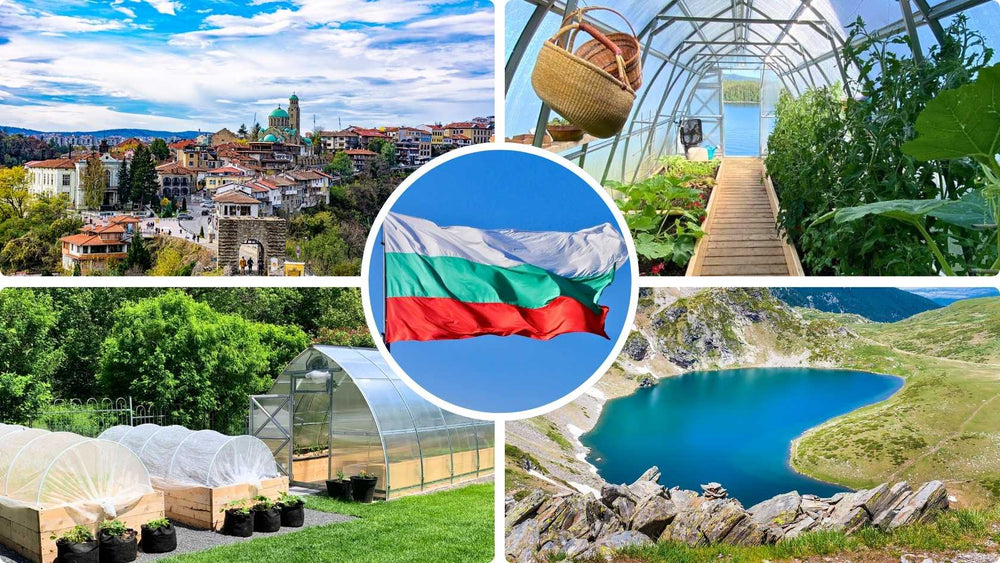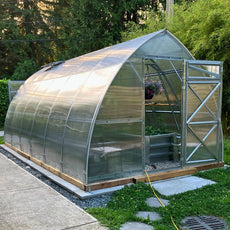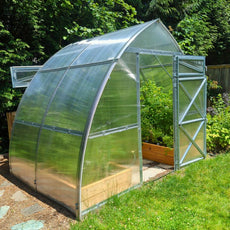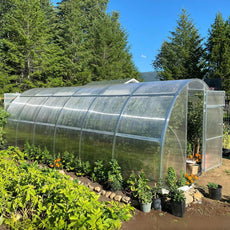In this article, you will learn:
- Characteristics of Bulgaria’s Planting Regions
- Challenges of Growing in Bulgaria
- The Benefits of Using a Greenhouse in Bulgaria
Bulgaria’s growing zones are influenced by its average annual minimum temperatures, ranging from -29°C in the mountainous northwestern areas (Zone 5) to -1°C along the Black Sea coast (Zone 9). Understanding these zones is essential for optimizing planting schedules and selecting appropriate crops to ensure healthy growth throughout the country’s distinct climates.

Image from Planta Maps
Characteristics of Bulgaria’s Planting Region
Bulgaria’s climate varies significantly across its regions, shaped by factors such as elevation, proximity to the Black Sea, and continental influences. Here are some key characteristics:
- Cold, snowy winters in mountainous regions (Rila, Pirin, Balkan Mountains)
- Long, hot summers in the southern lowlands (Plovdiv, Stara Zagora, Haskovo)
- Moderate coastal climate with mild winters along the Black Sea (Varna, Burgas)
- Frequent spring and autumn rainfall, especially in central and northern regions
- Late frosts in upland areas, affecting early planting schedules
- Occasional strong winds, particularly in open plains and coastal regions
The growing season in Bulgaria varies from region to region. Low-altitude and coastal areas enjoy a longer growing season from early April to late October, while high-altitude zones may only have a frost-free window from June to September.
Challenges of Growing in Bulgaria
Short Growing Seasons in High-Altitude Areas
Mountainous regions have shorter frost-free periods, requiring careful crop selection and season-extending techniques.
Extreme Temperature Fluctuations
The contrast between scorching summer days and cold spring/fall nights can stress plants, requiring adaptable varieties and protective measures.
Drought-Prone Summers in the South
The southern plains experience dry, hot summers, demanding efficient irrigation systems for sustainable agriculture.

The Benefits of Using a Greenhouse in Bulgaria
Greenhouses offer an excellent solution to Bulgaria’s climate challenges by extending the growing season and protecting plants from harsh weather conditions.
1. Extend your growing season
-
Without a greenhouse: Many regions in Bulgaria face growing limitations due to cold winters and unpredictable frosts, restricting outdoor cultivation to a few months.
- With a greenhouse: You can start planting as early as March and continue harvesting into late November—or even grow year-round with heating and lighting systems.

2. Grow a Wider Variety of Vegetables
- Without a greenhouse:
Outdoor planting is mostly limited to cold-hardy vegetables like:
|
Carrots Potatoes Rutabagas |
Peas Leafy greens (kale, spinach) |
- With a Greenhouse:
A controlled environment allows you to cultivate heat-loving crops such as:
|
Tomatoes Cucumbers Peppers Eggplant Zucchini |
Squash Green beans Strawberries Melons Grapes |
Peas Carrots Lettuce Cilantro Basil |





